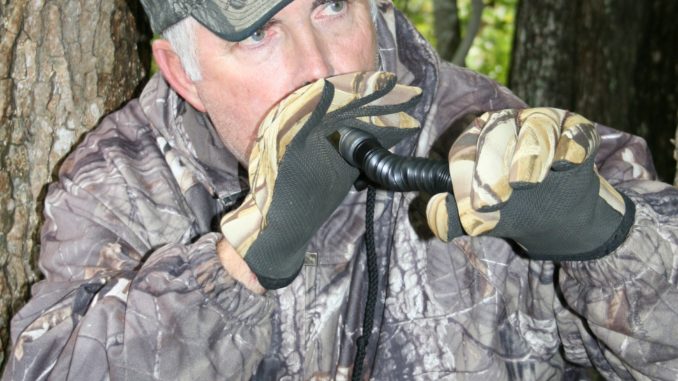
Fairfield County’s Bill Cline uses vocalization techniques to help him, especially when deer are on the move.
“Vocalization when deer are on the move in October does a couple of positive things for the hunter,” Cline said. “First, it widens your circle of effective hunting beyond what you can actually see. With deer moving a lot in October, I know some pass within their hearing range of me that I never see. By using grunts and/or bleats, I can actually impact deer that are not within my range of vision. A second reason is that since I primarily bowhunt, I need them close to be able to shoot, and this will often help me accomplish that goal.”
“When vocalization is used in the proper perspective, it’s an excellent hunting tool (to) help you harvest more and bigger deer,” Cline said. “My first step is to select a quality call. This will vary for individuals, but I want one that works for me and sounds like I feel it needs to sound. I want to be able to make a variety of sounds, but the grunt and bleat are key ones for attracting deer — both bucks and does.”
Cline said that if you’re not familiar with the natural sounds a deer makes, he recommends purchasing an instructional recording or video, studying it and practicing with your call while watching it. Better yet, he said, is to find an expert willing to spend a few minutes with you and instruct you personally.
“The real key to success with vocalization will come with experience,” he said. “Making the actual sounds is not really all that difficult with a quality call. Knowing when and where to make the sounds is the key. It’s important to not overdo a call. Just as in any hunting sport where calling is used, such as turkey or duck hunting, being realistic with your calls is extremely important.”
Cline said that typically, the use of a call will not scare a deer. Sometimes it will not make the deer turn and approach, but it will at least make the deer slow or stop for a moment.
“If the deer is in sight and it’s a deer you may want to shoot, just getting it to stop with a clear lane to shoot is all you require of the call,” he said. “Vocalization can have a wide range of impacts for a hunter. It’s not always about calling a deer to your location. Use it as a tool to stop a deer, and then you can determine if you want to harvest it. Also, I’ve learned that with even one live deer in your area, even if you’re not planning to shoot or can’t get the shot, odds are good you’ll see more soon.”
Cline said it takes only one big buck that would have otherwise eluded you to convince you of the effectiveness of deer vocalization. He said it’s like a lot of other tools of the trade — when you discover the need to vocalize, you’ll find you need it real, real bad. And when deer are on the move is a great time to use it.


Be the first to comment